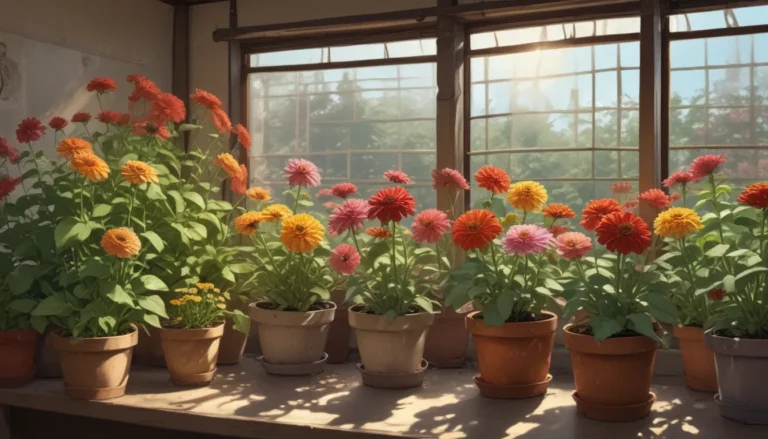Growing and Caring for Cumin Plants in Your Garden

Cumin: A Flavorful Delight in Your Garden
Cumin, or Cuminum cyminum, is a versatile culinary spice that adds a warm, earthy flavor to dishes. It is a popular spice in various cuisines such as Indian, Mediterranean, Middle Eastern, North African, and Mexican. If you love using cumin in your recipes like I do, why not try growing it in your garden?
Growing cumin is not as challenging as it may seem, even in colder climates. With the right techniques and care, you can enjoy a bountiful harvest of this aromatic herb right in your backyard.
In this comprehensive guide, you’ll learn everything you need to know about cumin cultivation, from propagation to harvesting. Let’s dive in!
What Is Cumin?
Cumin is a tender flowering annual herb in the parsley family, Apiaceae, grown for its seeds. It has a warm, slightly bitter taste that enhances a wide range of dishes. The plant grows to a height of 1 to 2 feet and produces fragrant pink or white flowers in midsummer, followed by seeds that mature in about 120 days.
Besides its culinary uses, cumin is also beneficial in attracting lacewings, predatory wasps, and ladybugs to your garden, helping control pest infestations.
Cultivation and History
Originating from the eastern Mediterranean, the Middle East, and India, cumin has a rich history as both a culinary spice and a medicinal herb. In ancient times, it was used in Egyptian mummification and was a common condiment in ancient Greece and Rome. Today, it is still appreciated for its medicinal properties, particularly in Ayurvedic medicine.
Due to its adaptability to various climates, cumin is grown worldwide, with India being the largest producer. It contains cuminaldehyde, an active ingredient with anti-inflammatory, antioxidant, and carminative properties.
Cumin Plant Propagation
Cumin is a heat-loving plant that requires a long, hot growing season. In colder climates, start seeds indoors about 4 to 8 weeks before the last expected frost date. Ensure temperatures are above 60°F before transplanting seedlings into the garden.
For direct outdoor sowing, wait until after the last frost date when nighttime temperatures remain above 60°F. Plant seeds 1/4 inch deep in rows spaced 18 inches apart.
To prevent transplant shock, use biodegradable pots or soil blocks for seed starting. Keep soil moist and transplant seedlings when they reach a height of a few inches.
How to Grow Cumin Plants
Cumin thrives in USDA Hardiness Zones 5-10 and requires full sun and well-drained sandy loam soil. Water plants regularly, especially during dry spells, but be cautious not to overwater to avoid root rot.
Here are some essential growing tips for cultivating cumin plants:
- Start seeds indoors in colder climates and transplant when temperatures rise.
- Plant in full sun in well-drained sandy loam soil.
- Grow cumin plants in clumps to provide support.
- Mist plants regularly to keep them moist without overwatering.
- Mulch with grass clippings or straw to regulate soil moisture.
Where to Buy Cumin Seeds
To start growing your own cumin, purchase seeds specifically for Cuminum cyminum. While store-bought seeds may germinate, it’s best to buy fresh, untreated seeds from reliable sources like Eden Brothers Nursery. Avoid confusion with other plants like Bunium bulbocastanum and Nigella sativa, which have different tastes and uses.
Attract beneficial insects to your garden with the fragrant flowers of cumin, making it an ideal trap plant for pest management.
Managing Pests and Disease
Cumin plants are generally resistant to pests, but they may occasionally attract aphids and fungal diseases like blight and powdery mildew. Here are some tips for preventing and treating common issues:
Pests
- Control aphid infestations by spraying plants with water or using insecticidal soap.
- Attract beneficial insects like predatory wasps to keep pests in check.
Diseases
- Prevent fungal diseases by improving air circulation around plants and avoiding overwatering.
- Treat mildew with neem oil or a homemade baking soda spray.
Take precautions to protect your cumin plants from common pests and diseases to ensure a healthy harvest.
Harvesting and Preserving Cumin Seeds
Cumin seeds are ready for harvesting about 120 days after planting when flowers dry out and turn brown. Cut stems close to the ground, dry seed clusters in paper bags, and remove seeds from pods after they are fully dry.
Store cumin seeds in a cool, dark place in airtight containers for up to two years. Grind seeds just before use to preserve their freshness and aroma.
Recipes and Cooking Ideas
Cumin is a versatile spice used in a variety of dishes worldwide, such as curries, hummus, and stews. Try incorporating cumin into your cooking with recipes like rice and beans, salads, and chili for a flavorful twist.
Explore new culinary horizons with cumin and enjoy the rich, warm flavors it adds to your favorite dishes.
Quick Reference Growing Guide
- Plant Type: Flowering annual herb
- Water Needs: Low
- Hardiness (USDA Zone): 5-10
- Season: Summer
- Exposure: Full sun
- Time to Maturity: 110-140 days
- Spacing: 6-18 inches
- Height: 1-2 feet
- Pests & Diseases: Aphids, blight, powdery mildew, fusarium wilt
Refer to this quick guide for essential information on growing and caring for cumin plants in your garden.
Just a Dash
Cumin is a delightful spice that can transform any dish with its warm, earthy flavor. Whether you grow it for culinary use or as a companion plant to attract beneficial insects, cumin is a rewarding addition to your garden.
Have you tried growing cumin in your garden? Share your experiences and tips in the comments below!
Expand your herb garden with these guides for growing caraway, lovage, and parsley for a more flavorful culinary experience.
Embellishing on the information provided in the original article, this comprehensive guide offers a detailed insight into the cultivation and care of cumin in your garden. From propagation to harvesting, learn the essential tips and techniques to successfully grow this versatile herb in your backyard. Experience the satisfaction of growing your own cumin and explore its rich history, uses, and culinary delights. Happy gardening!





